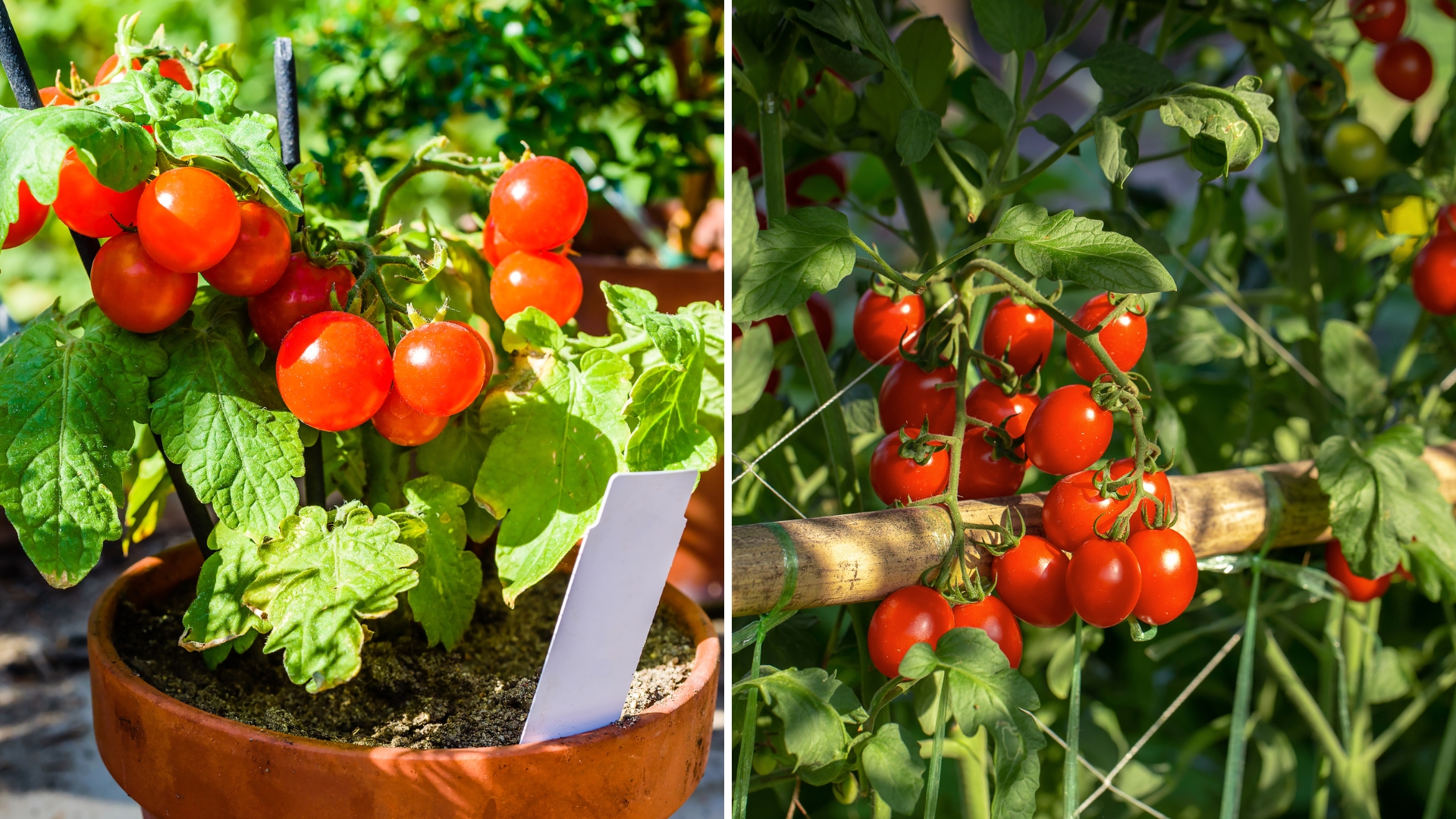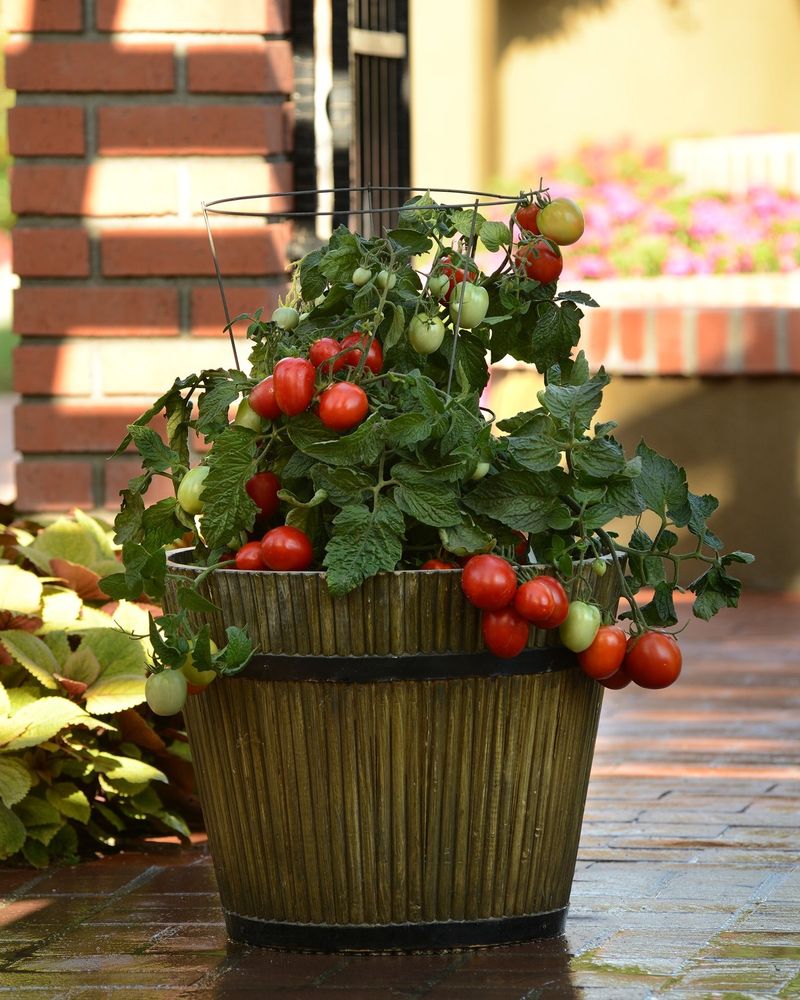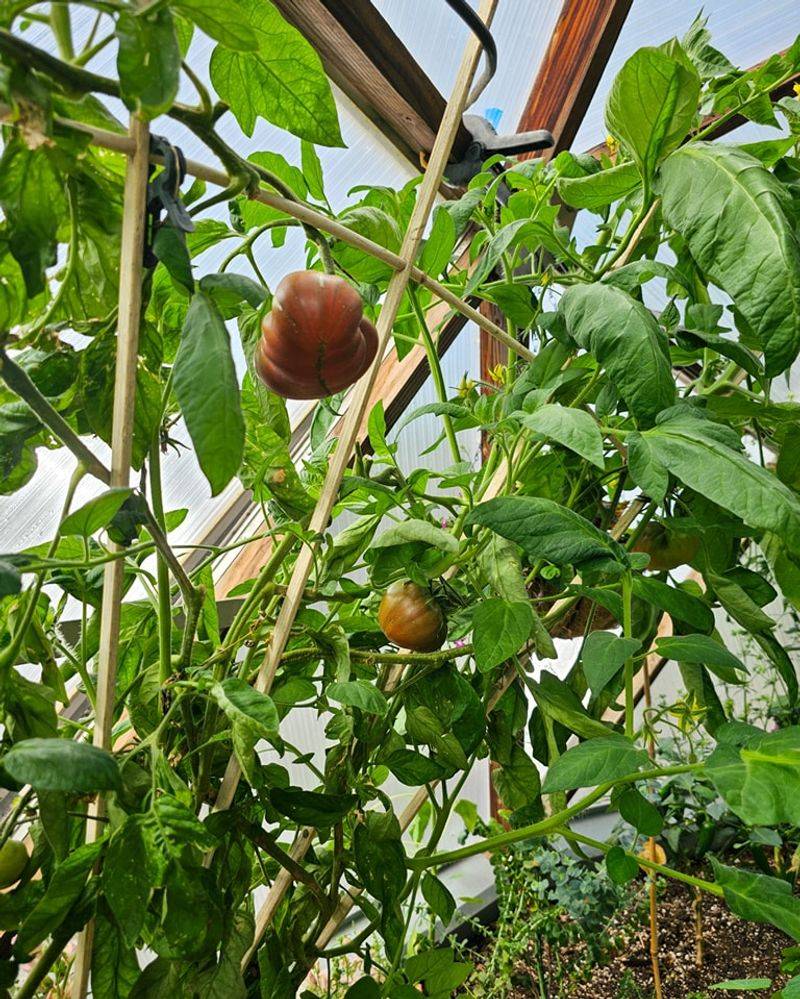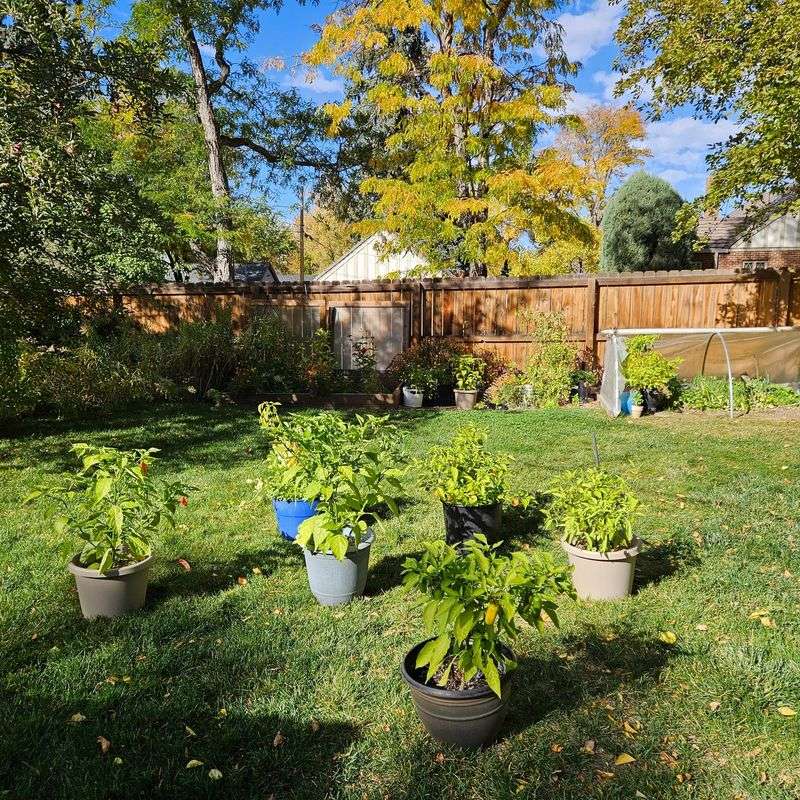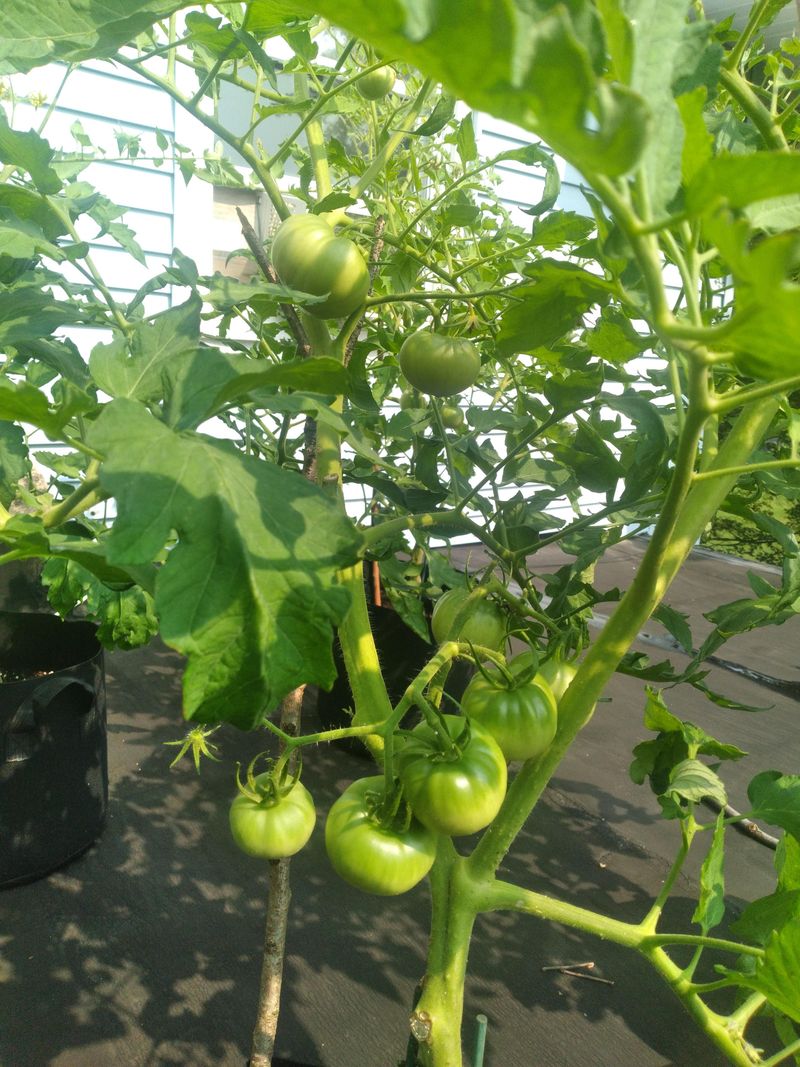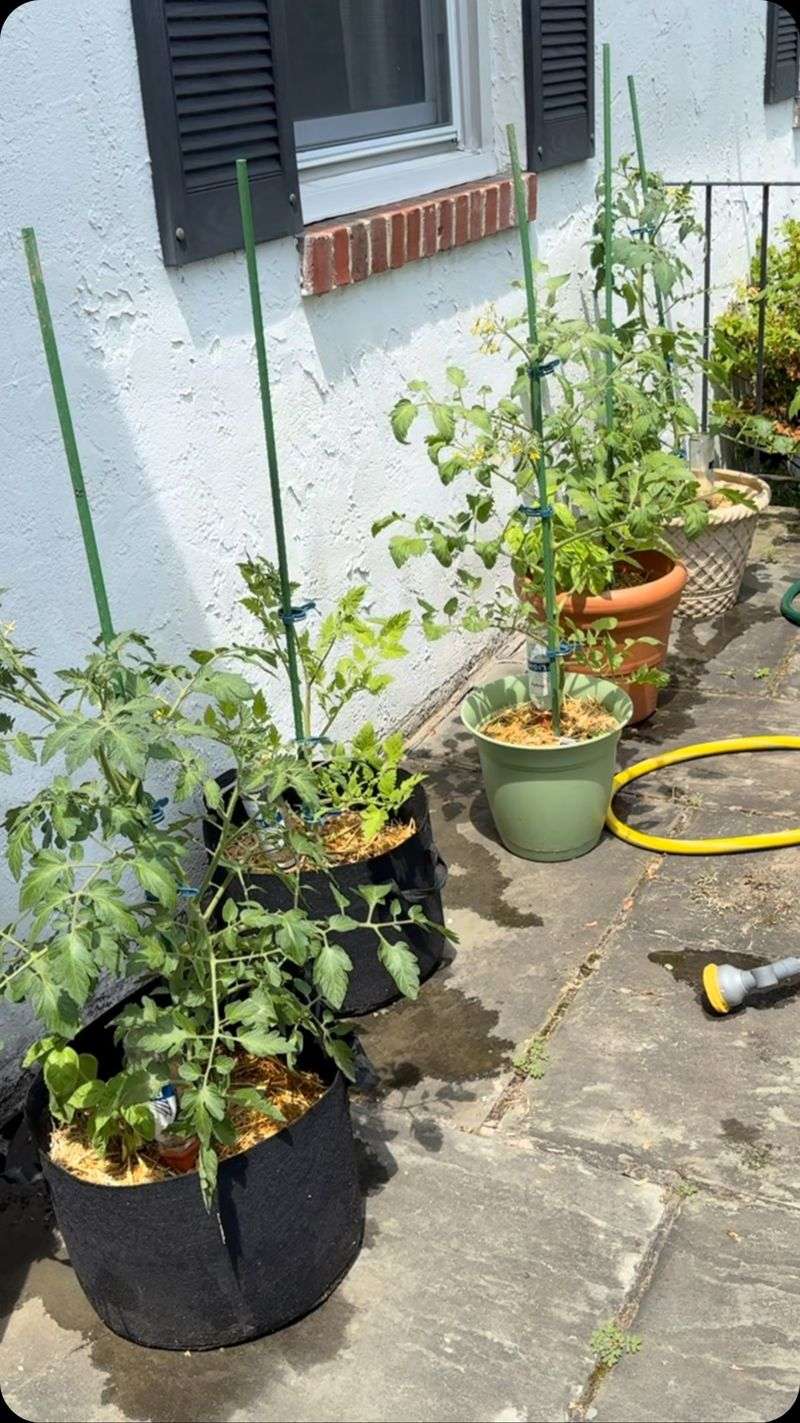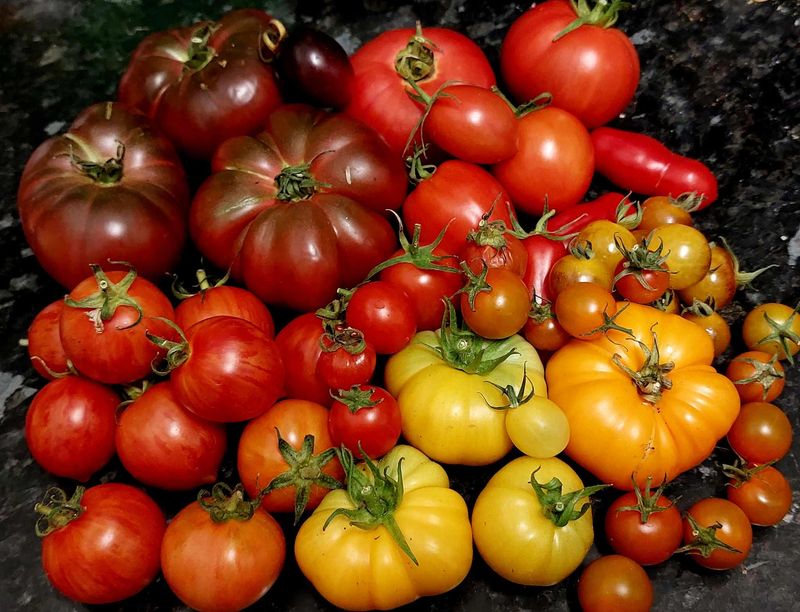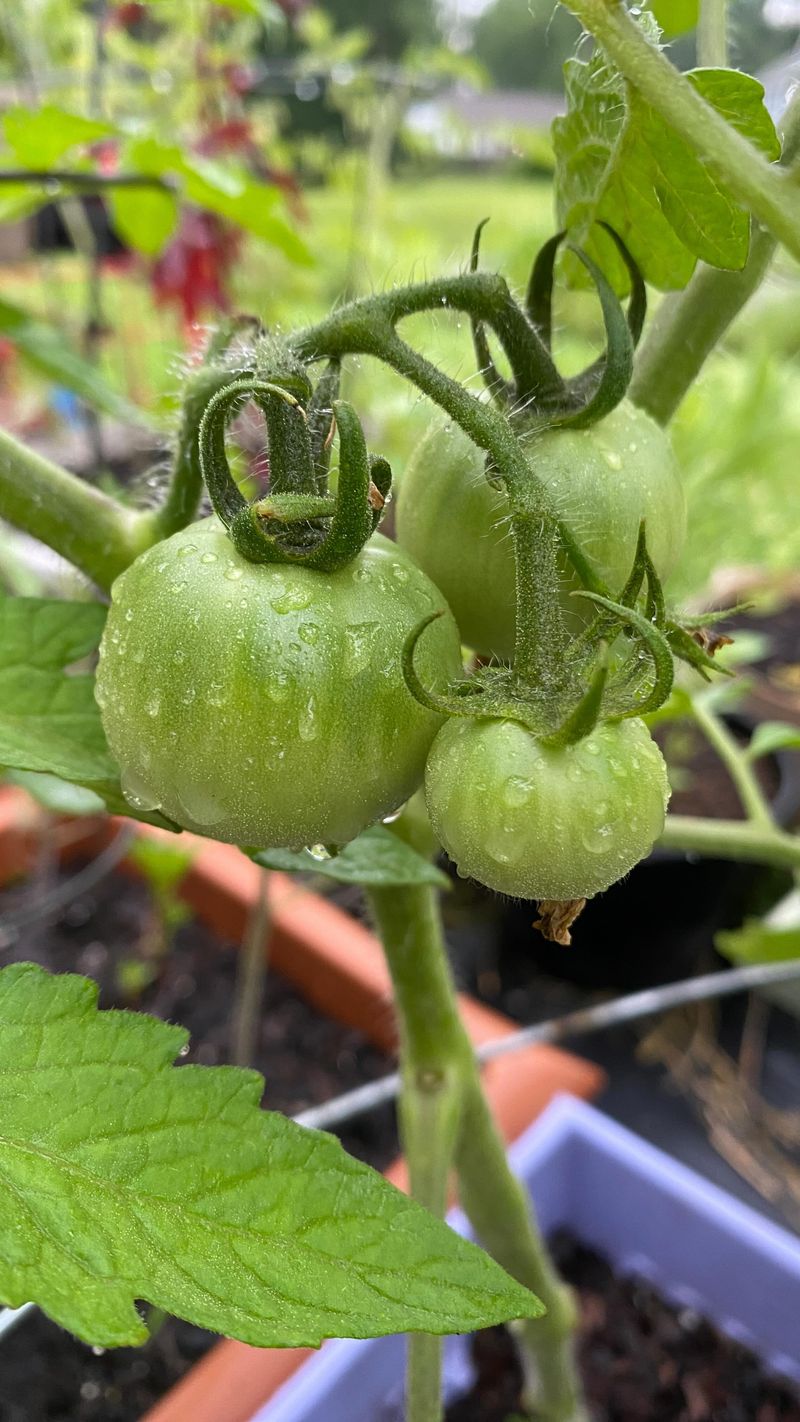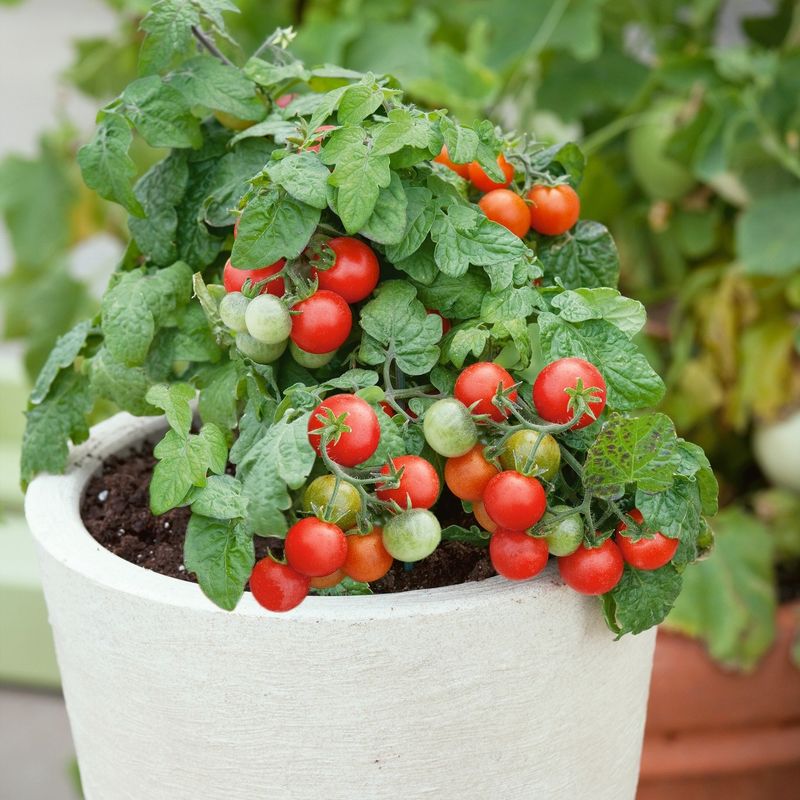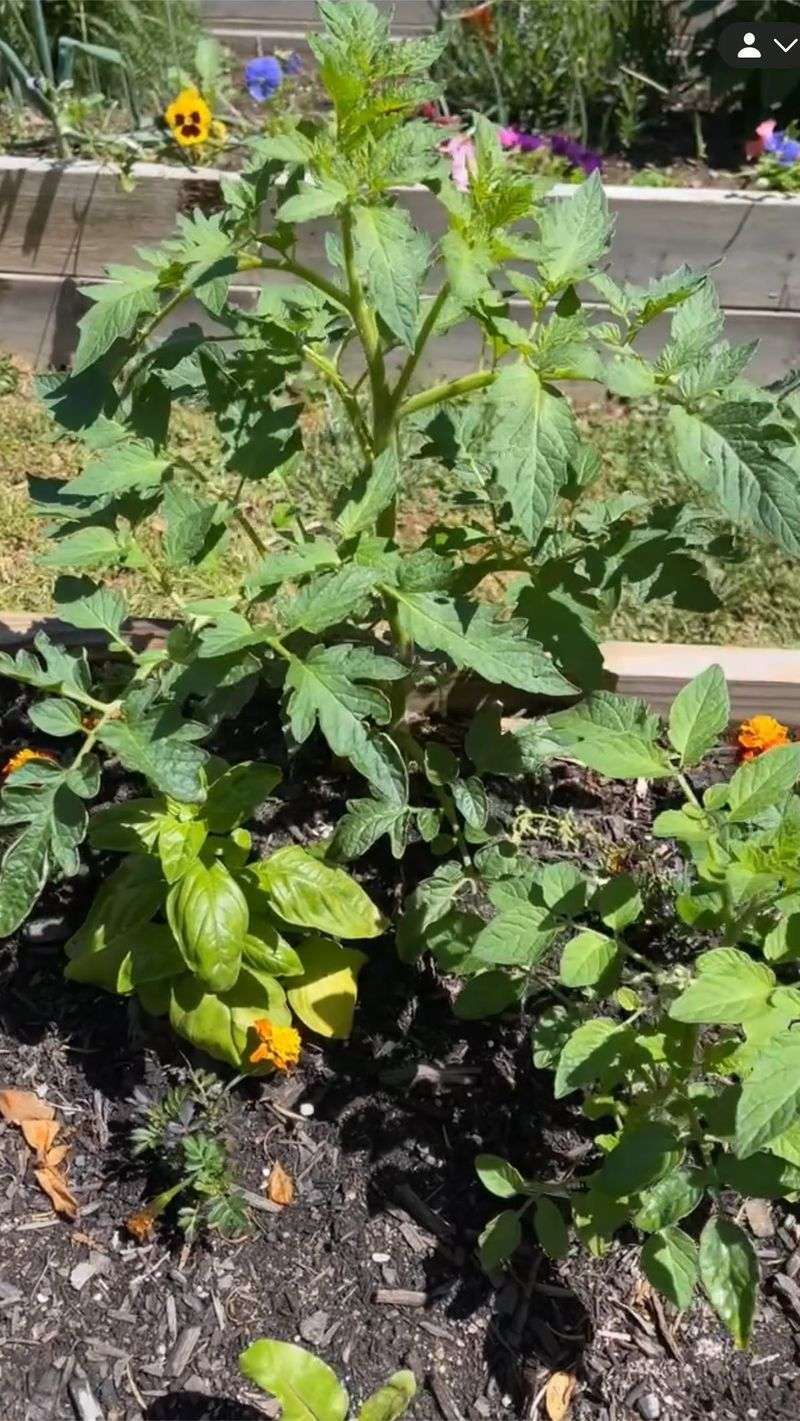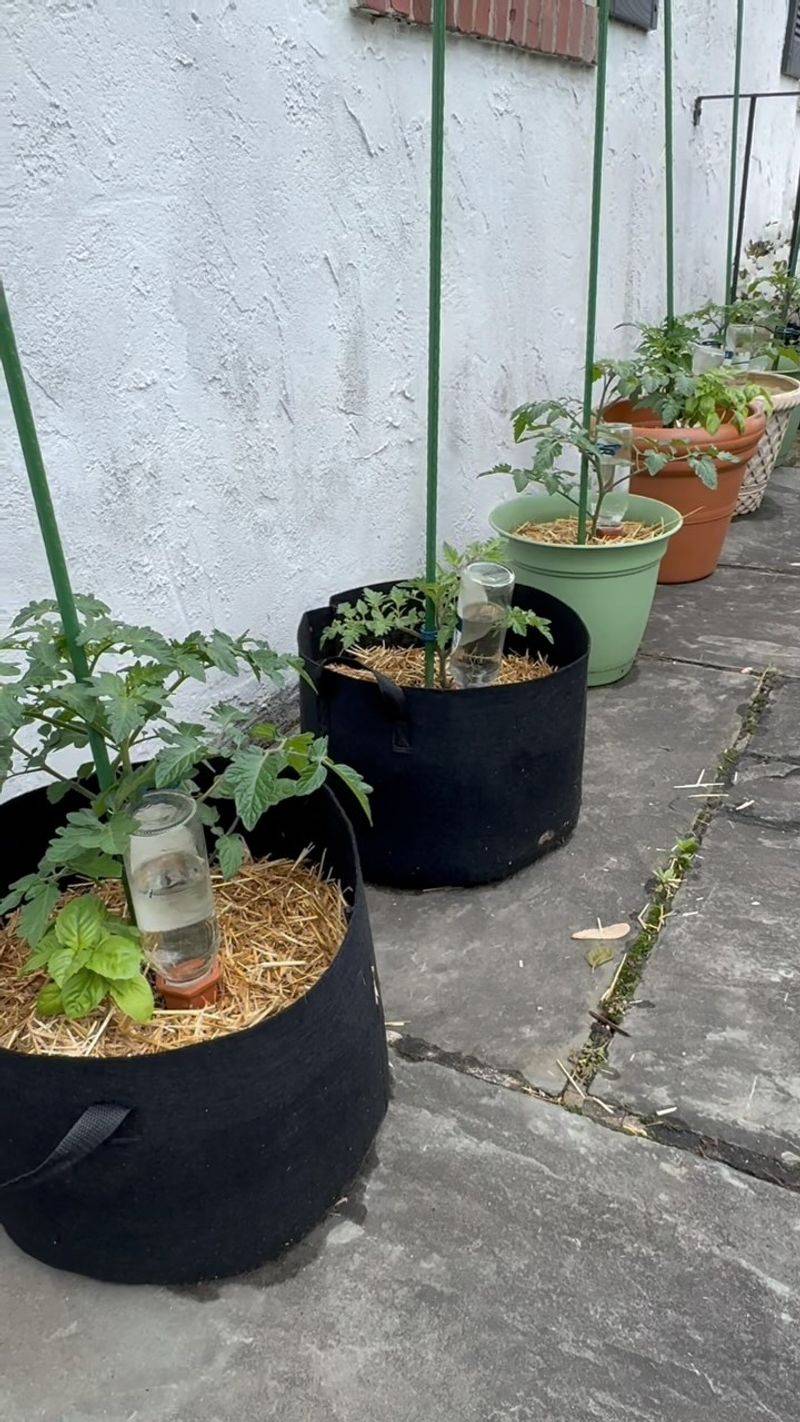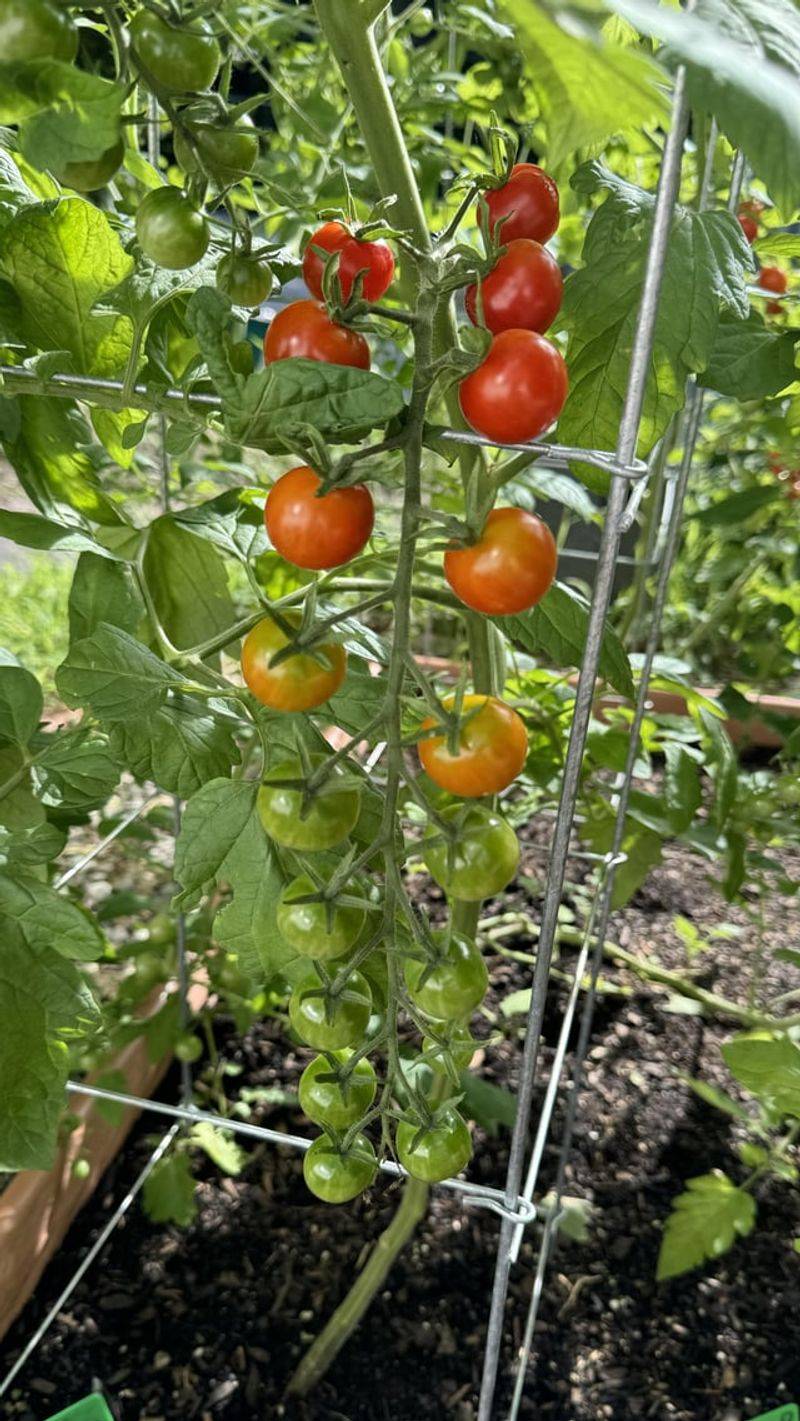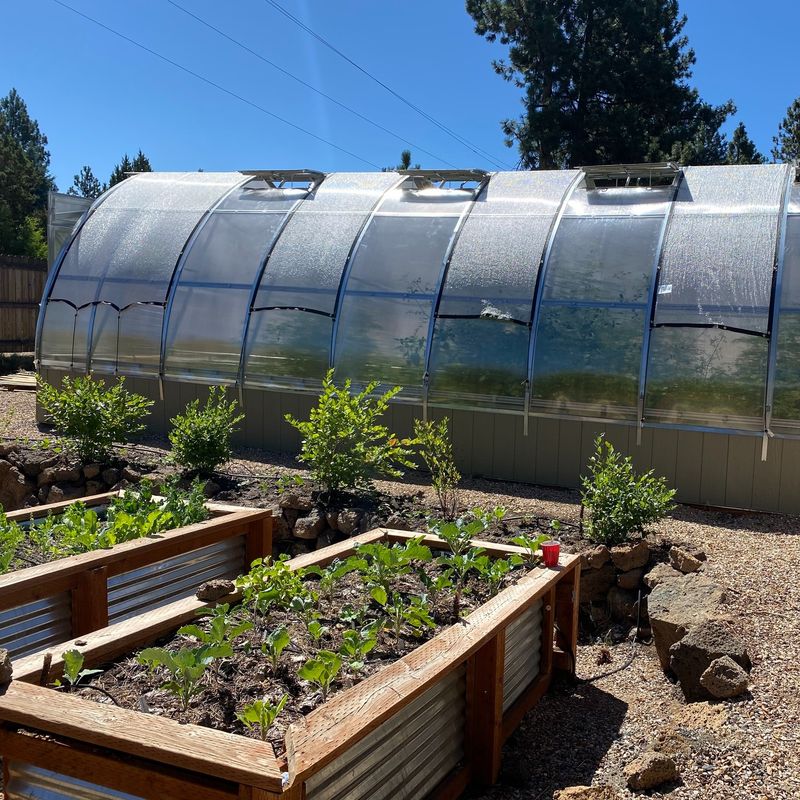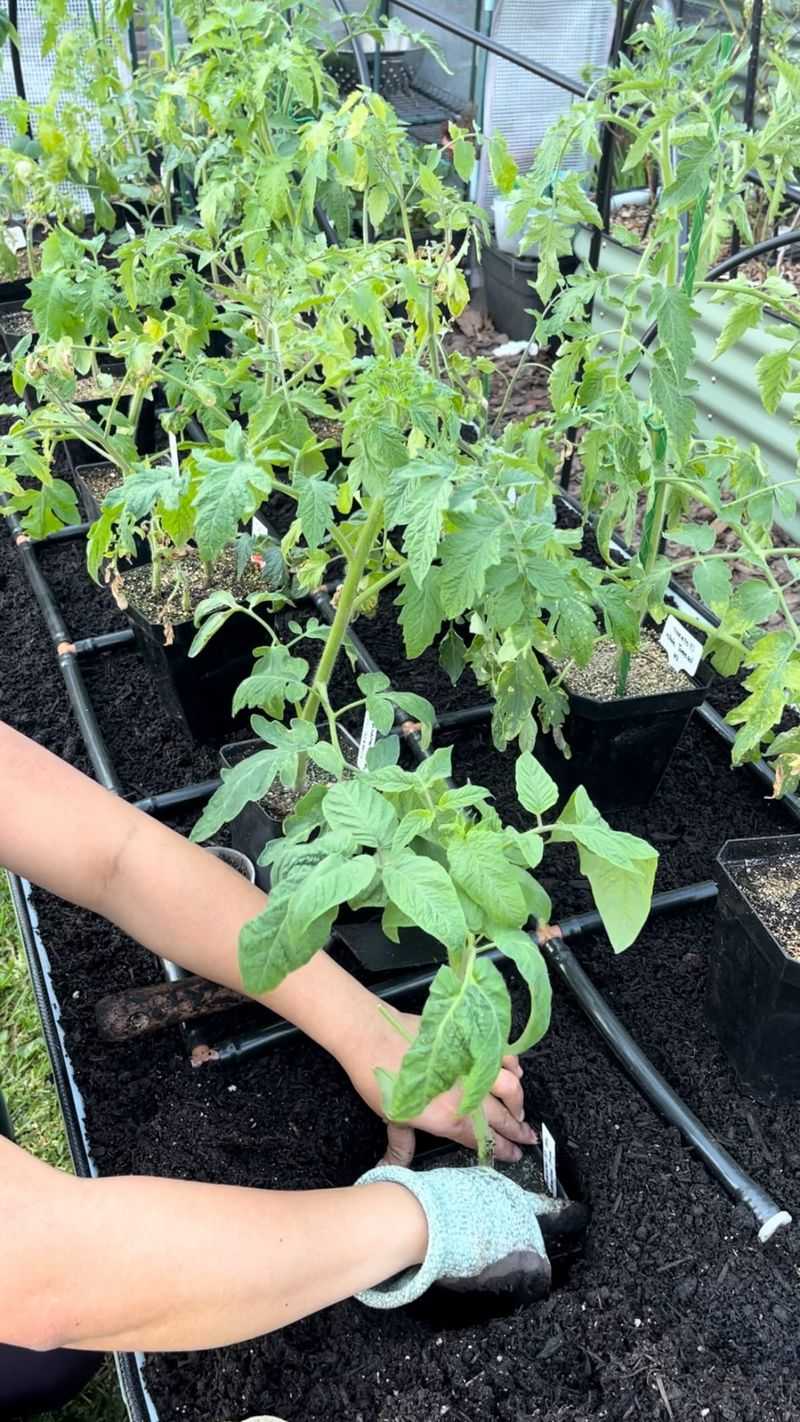Growing your own tomatoes gives you the freshest, tastiest fruits for your summer salads and sauces. But should you plant them in pots or directly in the ground? This choice can make a big difference in how many tomatoes you harvest and how good they taste. Let me share some expert advice to help you decide what’s best for your situation.
1. Consider Your Available Space First
Limited garden space? Container growing might be your answer. Pots allow you to grow tomatoes on patios, balconies, or even sunny windowsills when you don’t have a yard.
Ground planting works better when you have a dedicated garden area with plenty of room. Tomato roots can spread up to 3 feet underground when not contained, which often leads to stronger plants.
Your space situation should be the first factor in your decision-making process, as it immediately narrows your options.
2. Assess Your Soil Quality
Garden soil varies dramatically from place to place. Rocky, clay-heavy, or sandy soil makes growing tomatoes directly in the ground challenging without significant amendments.
Container growing gives you complete control over soil quality from day one. You can purchase premium potting mix specifically formulated for vegetables, avoiding any existing soil problems.
Test your garden soil before planting. If pH levels are way off or the nutrient profile is poor, containers might save you years of soil improvement work.
3. Mobility Matters More Than You Think
Potted tomatoes can be moved to follow the sun throughout the growing season. This mobility becomes a game-changer in partially shaded yards where direct sunlight shifts as summer progresses.
Ground-planted tomatoes stay put, making location selection crucial. Once established, moving them isn’t an option without damaging the plant.
For beginners or those in unpredictable climates, the ability to relocate plants during sudden temperature drops or harsh weather provides valuable protection and peace of mind.
4. Temperature Management Differences
Container soil heats up faster in spring, allowing for earlier planting in cold climates. This head start can mean harvesting weeks before ground-planted tomatoes.
However, that same quick-heating quality becomes a disadvantage during summer heat waves. Potted tomatoes need more frequent watering as their soil temperatures can rise dramatically, stressing plants.
Ground-planted tomatoes enjoy more stable soil temperatures. The large soil mass acts as insulation, keeping roots cooler during heat waves and warmer during cool nights.
5. Water Requirements Vary Significantly
Container tomatoes typically need daily watering during hot weather. The limited soil volume dries out quickly, especially in terracotta or small pots that offer less moisture retention.
Ground-planted tomatoes generally require less frequent watering once established. Their extensive root systems can seek moisture deeper in the soil profile during dry spells.
Your watering habits and schedule should influence your decision. If you travel frequently or tend to forget watering, in-ground planting provides more forgiveness than containers.
6. Nutrient Management Strategies
Container tomatoes need more frequent fertilizing because nutrients wash out with each watering. Plan on feeding every 2-3 weeks with liquid fertilizer to maintain healthy growth.
Ground-planted tomatoes can access a larger nutrient reservoir. With proper soil preparation, they often need just 2-3 applications of fertilizer throughout the growing season.
Your fertilizing approach matters too. If you prefer organic methods, incorporating compost works better in ground gardens, while containers often require more concentrated organic fertilizers.
7. Variety Selection Makes a Difference
Determinate (bush) tomato varieties grow well in containers since they naturally stay compact. Their predetermined height and earlier fruiting work perfectly with container limitations.
Indeterminate (vining) varieties thrive in ground gardens where they can spread extensively. These plants keep growing and producing until frost kills them, reaching heights of 6+ feet with proper support.
Dwarf and micro varieties were specifically bred for containers. These special tomatoes produce full-sized or cherry fruits on plants that may grow only 12-18 inches tall.
8. Disease Management Considerations
Container growing reduces soil-borne disease risks significantly. Using fresh potting mix each season virtually eliminates problems like fusarium wilt, verticillium wilt, and nematodes that persist in garden soil.
Ground-planted tomatoes face more disease challenges, especially in gardens where tomatoes have grown before. Crop rotation becomes essential to prevent pathogen buildup.
If you’ve had disease problems with tomatoes in the past, containers provide a clean slate without waiting the recommended 3-4 years between planting tomatoes in the same garden spot.
9. Root Development and Plant Size
Ground-planted tomatoes develop more extensive root systems, which often translates to larger plants overall. These extensive roots support more foliage and fruit production when conditions are favorable.
Container tomatoes have restricted root zones, limiting their maximum size. Even large containers (5+ gallons) constrain root development compared to ground planting.
The container size directly impacts plant performance. A too-small pot leads to root binding, nutrient deficiencies, and reduced yields regardless of how well you care for the plant otherwise.
10. Yield Expectations and Fruit Quality
Ground-planted tomatoes typically produce higher total yields when growing conditions are ideal. Their unrestricted roots support more fruit production over a longer season.
Container tomatoes often produce fewer total tomatoes but can deliver comparable quality. With proper care, potted tomatoes can be just as flavorful and sometimes even ripen earlier than their in-ground counterparts.
For maximum production, ground planting generally wins. For convenience and still-excellent quality, containers remain a fantastic option for many gardeners.
11. Pest Control Differences
Elevated containers naturally deter some ground-dwelling pests like slugs and certain beetles. This height advantage can reduce pest pressure without additional interventions.
Ground-planted tomatoes face the full spectrum of garden pests. However, they also benefit from natural predators and beneficial insects that may be more prevalent in a garden ecosystem.
Container tomatoes on patios or balconies often experience fewer pest problems overall, making them ideal for gardeners who prefer minimal pest management or organic growing methods.
12. Cost Comparison Over Time
Starting with containers requires a higher initial investment. Quality containers, potting mix, and possibly a dolly or plant stand add up quickly, especially for multiple plants.
Ground planting costs less to begin but may require soil amendments over time. The long-term expenses even out as containers need fresh potting mix annually while garden soil builds value with each season of care.
Budget-conscious gardeners can find middle ground with grow bags, which cost less than hard containers but offer similar benefits for tomato growing.
13. Time and Effort Requirements
Container growing demands more frequent attention, particularly with watering and fertilizing. During summer heat, daily watering becomes non-negotiable to prevent plant stress.
Ground-planted tomatoes require more initial work preparing the soil but generally need less frequent maintenance once established. Their deeper roots provide more self-sufficiency during the growing season.
Your gardening style matters here. If you enjoy daily garden interaction, containers keep you engaged. If you prefer weekend gardening, ground planting might better match your lifestyle.
14. Climate Adaptation Strategies
Extreme climates often favor one method over the other. In very hot regions, ground planting provides root insulation that containers can’t match, reducing heat stress during scorching summers.
Cold climate gardeners benefit from containers that can be moved indoors during late spring frosts or early fall freezes, extending the growing season significantly.
Rainy climates present drainage challenges for ground gardens, making raised beds or containers with excellent drainage the better option to prevent root rot and fungal diseases.
15. The Hybrid Approach: Best of Both Worlds
Many experienced gardeners use both methods simultaneously. They start early with containers that can be protected from spring frosts, then plant their main crop in the ground when weather stabilizes.
This combination strategy maximizes the growing season while hedging against weather uncertainties. Early container harvests blend seamlessly into main-season ground harvests for continuous production.
The hybrid approach allows experimentation with different varieties suited to each growing method, expanding your tomato horizons and gardening knowledge simultaneously.

